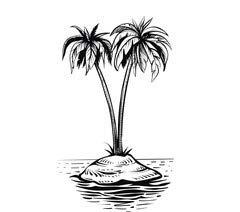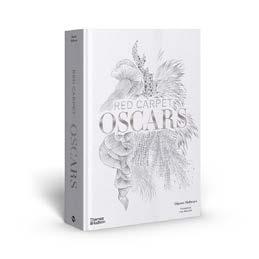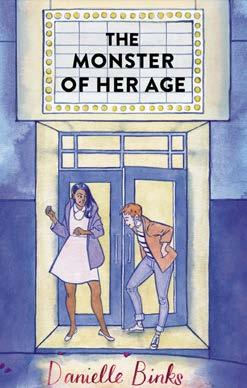
4 minute read
100 Words Contribution
So you want to be a writer? The Vomit Draft
Tony waited outside the gabinetto at Cafe DeFrancesco for 30 minutes and his patience was wearing thin. He was a nervous wreck, after receiving an invite to a sit down with Genco Abbandando, Consigliere of the Corleone family. The meeting could go either way. He could leave with a peaceful resolution, or in the trunk of a car. The conversation would be about money… always money.
Advertisement
Desperation eventually overtook reason, as Tony unleashed a tirade of Sicilian curses on the hapless, unknown occupant.
When the gabinetto door finally opened, he was met with the disapproving gaze of Don Vito Corleone.
Perihan Bozkurt, Lane Cove
Words: Nicole Lenoir-Jourdan, casual academic at Western Sydney University and Macquarie University
How do you write a novel? The advice espoused by all the greats from Hemingway to Allende is just to write. Neil Gaiman sums it up, “This is how you do it: you sit down at the keyboard and you put one word after another until it’s done. It’s that easy, and that hard.”
It is that hard. But the vomit draft method is here. It’s a way to burn those blank pages with words so you have something to edit. The genius is in the editing (but that’s another topic.) Once you give yourself the permission to write badly you are on your way to a draft.
So here are the vomit draft phases. The temptation phase
Temptation begins as a great idea. Adrenaline pumps from this notion of having a story and becoming a writer. Yet it’s not healthy for the idea just to eat away at your mind or go stale. Get your idea out and to the world.
And thus the prodomal or pre ejection phase of the vomit draft begins.
This is the stewing of the idea inside your brain. It simmers. It gets added to and soon it is ready for ejection.
The ejection phase
The anthropologist arrived on the remote Isle of Flores, Indonesia, to study the skeletal remains of a unique species of human, measuring only one metre in height. The bizarre discovery gained international media attention, as the now extinct inhabitants were nicknamed, “the Hobbits”.
On his first night, he camped near the excavation site. When the last embers of the fire dimmed, he was fast asleep.

Meanwhile, the nocturnal creatures awakened, with sounds of owls, bats, Komodo dragons and a strange scurrying noise in the dense vegetation. Emerging from the darkness, it slowly crept closer and closer, towards the sleeping giant.
Perihan Bozkurt, Lane Cove
The ejection phase is about expelling all your ideas on to paper or the computer. Don’t worry about what you write. Just get the story down. Don’t wait for that perfect sentence to come to you, it may never come and if it does, you may edit it out along with that darling chapter that you loved.
The feeling better phase
Once the story is down on paper, you can come up for air. Reward yourself. You now have the beginnings of a great novel. There are so many words of advice about becoming a writer and here is one to keep in mind when you are thinking about giving up. It’s from Richard Bach, “A professional writer is an amateur who didn't quit.”
Top 4 Books To Read This Month
The Monster of Her Age
by Danielle Binks
Victory City by Salman Rushdie. Salman Rushdie at his very best – a magical realist tale with a message for us all –that power is fleeting but stories last for ever.
How to Kill a Client
by Joanna Jenkins
A fast paced and wickedly funny thriller about power and revenge from a debut Australian author.
“Keeps you gripped ... The perfect tonic for anyone who has had a difficult client”
Red Carpet Oscars
by Dijanna Mulhearn
An extensive and sumptuous look at the fashion on the most famous red carpet of them all spanning over 90 years.

Just William, William Again, More William and William the Outlaw all by Richard Crompton
Updated, fun new editions of these much loved children’s classics published to celebrate the 100th year anniversary of Just William. ‘William is as fresh and funny as ever” Chris Riddell.
WORDS: ELIZABETH ALLEN
Lovinger House, a gothic mansion in Hobart, has been home to generations of the Lovinger acting dynasty. It is here that seventeenyear-old Ellie Marsden gathers with other members of her complex family tree because her grandmother (and famous film star), Lottie Lovinger, is dying. As a child Ellie acted alongside Lottie in an indie horror film that later became a cult classic. The experience has left Ellie traumatised and estranged from Lottie and other family members, negatively defining her existence for years.
The source of Ellie’s trauma is gradually revealed in a way that builds a sickening suspense. The reader learns that the techniques used by the director of Blood Jacaranda were deeply unethical and pushed Ellie beyond her limits to get her iconic performance as the film’s werewolf “monster”. It isn’t until Ellie meets a young woman, Riya, who is the founder of a feminist horror film collective that she starts to unravel her past and come to a point of understanding about what she has been through.
Binks is a champion of the #LoveOzYA movement which aims to provide exposure and community for Australian young adult authors in a market often swamped by their American counterparts. In 2015 Binks wrote an online article for Kill Your Darlings magazine in which she stated: “We need to celebrate the enormous talent within Australian Young Adult literature – founded by literary legends like Ruth Park, Robin Klein, Victor Kelleher, Nan Chauncy, Patricia Wrightson and so many more who helped shape our national identity.”
This young adult novel embodies inclusivity and diversity – in terms of sexuality, race, religion, and disability – but not in a way that is didactic or clunky. The varied makeup of the characters’ lives and the intersectionality they inhabit isn’t laboured over; it simply who they are. Binks is preoccupied with the capacity for Australian stories, in film or in print, to let us see ourselves. She imagines a fictional history of a flourishing Australian film industry which was all but non-existent for decades. She also explores the feminist implications of horror films and Final Girls (the female protagonists who endure and survive). As Riya puts it: “… horror is the one genre that puts women’s fears and insecurities under the spotlight, only to be overcome.” (p247) Ellie is a quintessential Final Girl and it was delightful and enriching to spend 253 pages with her.
Elizabeth will be reviewing all types of books – children’s, fiction, non-fiction, poetry and more. She is an accomplished writer and is the children’s literature specialist at Burns Bay Bookery. www.thepoetelizabethallen.com








